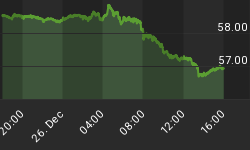It seems that recently I've developed a bit of a theme in pointing out situations where the market was pricing one particular outcome so completely that it paid to take the other side even if you didn't think that was going to be the winning side. The three that spring to mind are: Brexit, Trump, and inflation breakevens.
Why do these opportunities exist? I think partly it is that investors like to be on the "winning side" more than they like ending up with more money than they started. I know that sounds crazy, but we observe it all the time: it is really hard (especially if you are a fund manager that gets paid quarterly) to take losses over and over and over, even if one win in ten tries is all you need to double your money. It's the "wildcatter" mindset of drilling a bunch of dry holes but making it back on the gusher. It's how venture capital works. There are all kinds of examples of this behavioral phenomenon. I am sure someone has done the experiment to prove that people prefer many small gains and one large loss to many small losses and one large gain. If they haven't, they should.
I mention this because we have another one.
December Fed Funds futures settled today at 99.475. Now, Fed funds futures settle to the daily weighted average Fed funds effective for the month (specifically, they settle to 100 minus the average annualized rate). Let's do the math. The Fed meeting is on December 14th. Let's assume the Fed tightens from the current 0.25%-0.50% range to 0.50%-0.75%. The overnight Fed funds effective has been trading a teensy bit tight, at 0.41% this month, but otherwise has been pretty close to rock solid right in the middle except for each month-end (see chart, source Bloomberg) so let's assume it trades in the middle of the 0.50%-0.75% range for the balance of the month, except for December 30th (Friday) and 31st (Saturday), where we expect the rate to slip about 16bps like it did in 2015.

So here's the math for fair value.
14 days at 0.41%Â (December 1st -14th)
15 days at 0.625% (December 15th-29th)
2 days at 0.465% (December 30th-31st)
This averages to 0.518%, which means the fair value of the contract if the Fed tightens is 99.482. If the Fed does not tighten, then the fair value is about 99.60. So if you buy the contract at 99.475, you're risking…well, nothing, because you'd expect it to settle higher even if the Fed tightens. And your upside is 12.5bps. This is why Bloomberg says the market probability of a 25bp hike in rates is now 100% (see chart, source Bloomberg).

There is in fact some risk, because theoretically the Fed could tighten 50bps or 100bps. Or 1000bps. Actually, those are all probably about equally likely. And it is possible the "turn" could trade tight, rather than loose. If the turn traded at 1%, the fair value if the Fed tightened would be 99.448. So it isn't a riskless trade.
But we come back to the same story - it doesn't matter if you think the Fed is almost certainly going to tighten on December 14th. Unless you think there's a chance they go 50bps or that overnight funds start trading significantly higher before the meeting, you're supposed to be long December Fed funds futures at 99.475.
The title of this post is a question, because remember - for everyone who is buying this option at zero (or negative) there's someone selling it too. This isn't happening on zero volume: 7207 contracts changed hands today. That seems weird to me, until I remember that it has been happening a lot lately. Someone is losing a lot of money. What is this, Brewster's Millions?
An administrative announcement about upcoming (free!) webinars:
On consecutive Mondays spanning November 28, December 5, and December 12, at 11:00ET, I will be doing a series of one-hour educational seminars on inflation. The first is "How Inflation Works;" the second is "Inflation and Asset Classes;" and the third is "Inflation-aware Investing." These webinars will also have live Q&A. After each session, a recording will be available on Investing.com.
Each of these webinars is financially sponsored by Enduring Investments.
















